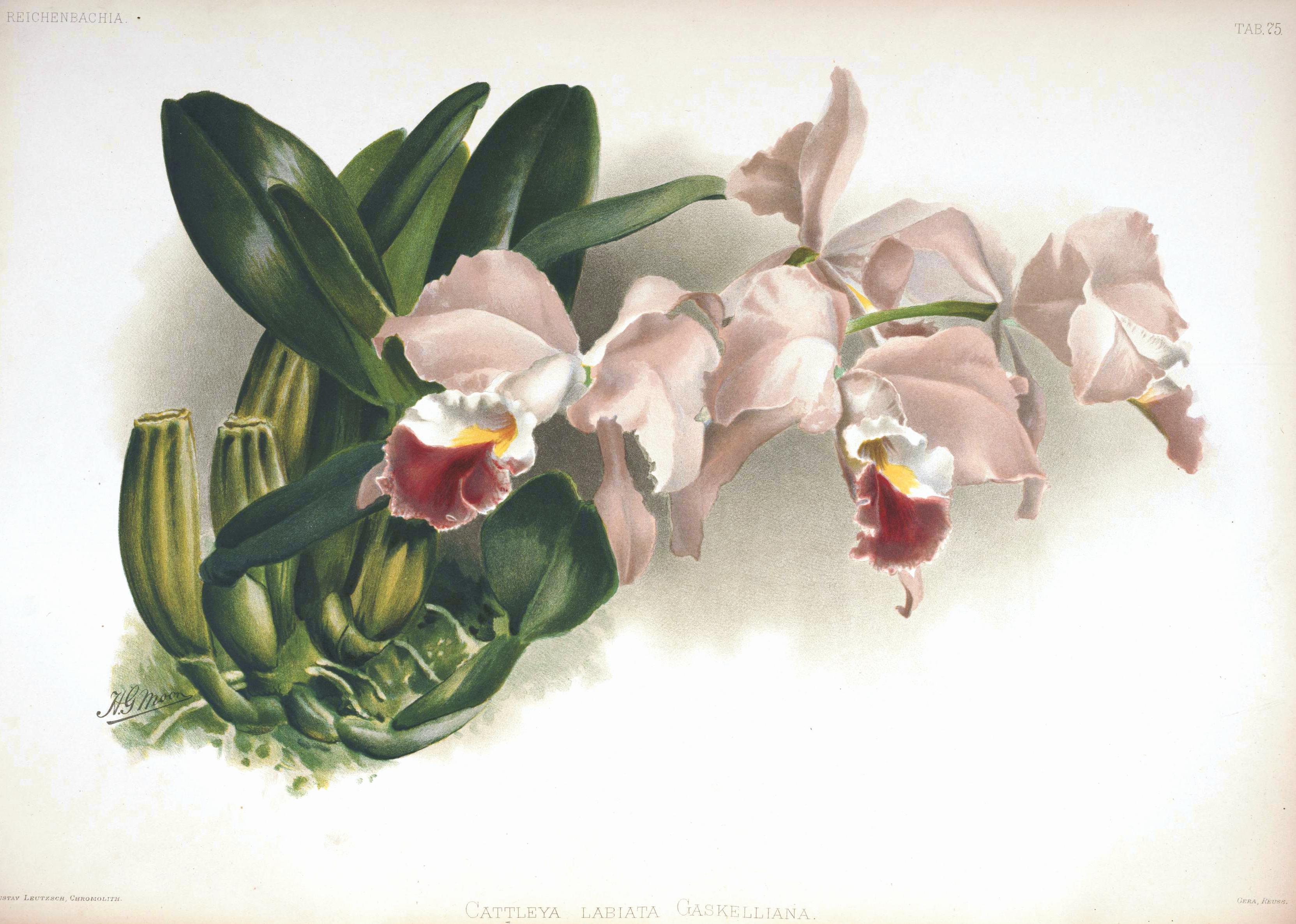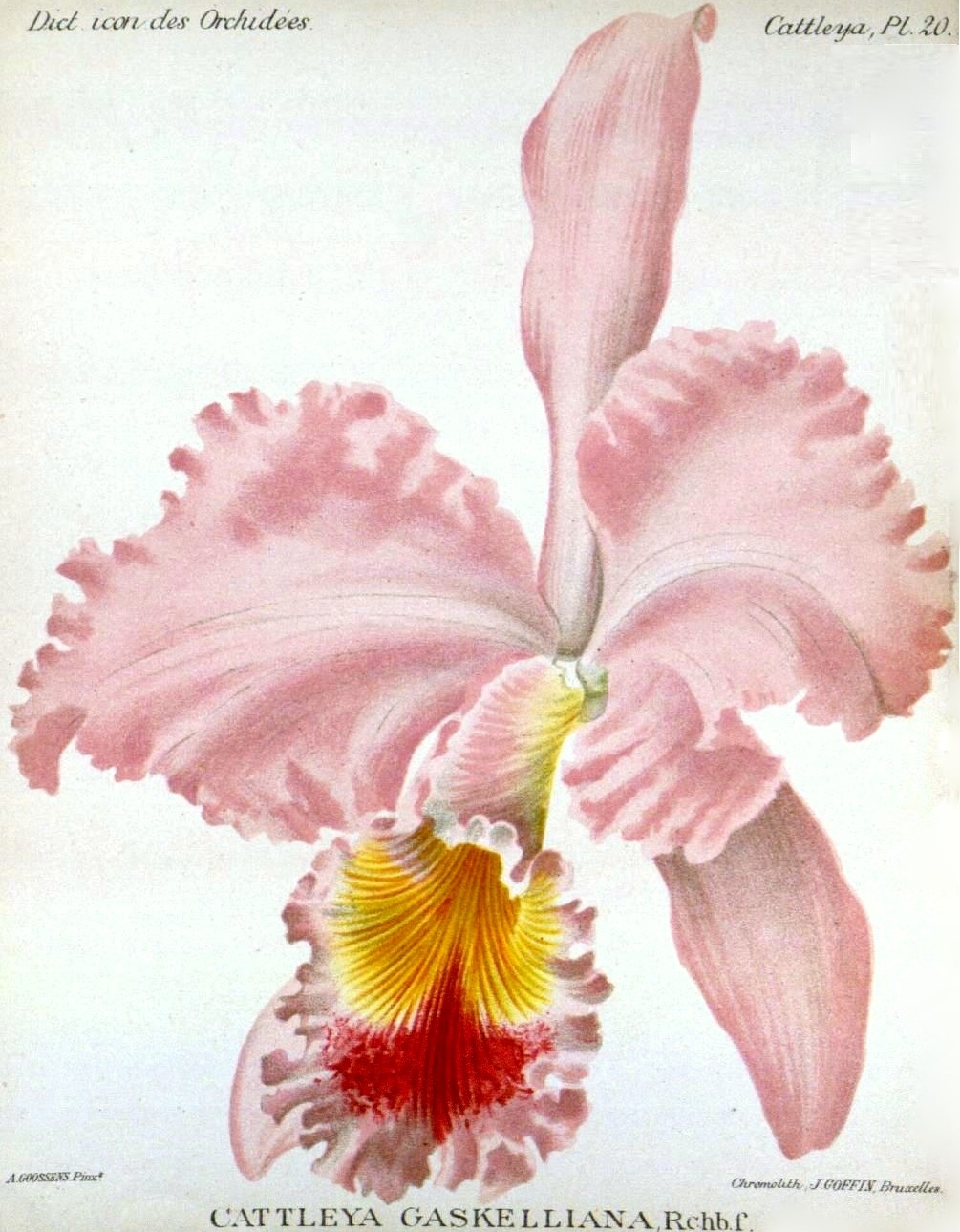The orchid-grower’s manual ed. 6: 182 (1885)

Cattleya gaskelliana was described by Heinrich Gustav Reichenbach in 1883, after it flourished for the first time in the English greenhouses of Frederick Sanders who, in turn, dedicated it to Holbrook Gaskell, a notable collector from the north of England.
It is endemic to the northeast of Venezuela, in the eastern branch of the Cordillera de la Costa, between 8° and 10° north latitude and 62° to 65° west longitude, specifically in the states of Anzoátegui, Monagas and Sucre.

Its habitat can be divided into two well-defined zones:
Zone 1: To the north of Monagas state and to the south of Sucre state. They grow on trees of medium to high height (15 to 40 meters) on the banks of rivers in an area of humid tropical forest, whose center of dispersion is the population of Caripe, in the state of Monagas, where rainfall is relatively abundant during all year. The altitude varies between 800 and 1300 meters above sea level. The plants in this area are quite robust and the pseudobulbs can reach up to 25 cm in length, with very leathery and wide leaves.
Zone 2: Northeast of Anzoátegui state, in a small area of tropical dry forest known as “New World”, where they develop as lithophytes on the rocky slopes of rivers, sometimes in full sunlight. There they thrive between 1,300 and 1,500 meters above sea level and form large colonies. Plants in this area are generally smaller and slimmer than their cariperas sisters. This region has been harshly punished by collectors for years and, today, it is very difficult to observe any plant in its natural habitat.
They are medium-sized plants, with strongly compressed pseudobulbs attenuated towards the base and formed by two or three internodes. A single very coriaceous leaf, oblong-elliptical, which forms about 30° inclination with respect to the bulb. Lone spat.
They bloom between the beginning of April and the middle of June. Each inflorescence bears between 2 and 6 flowers that reach between 14 and 20 cm in diameter, erect and well presented on the foliage, although they are somewhat weak in substance, so they hardly last two weeks. The type color of the species is lilac or purple-pink, generally pale. The lip is large, round and slightly curly, with a well-defined triangular purple spot in front that never mixes with the yellow of the throat. It has a sweet and delicate aroma.
To recognize one we must notice several characteristics in the plant and in the flowers that can help us: first of all, it always blooms from an immature bulb. This means that when the pseudobulb is just finishing forming, the buttons on the spathe are already noticeable. This characteristic differentiates it from other similar species such as Cattleya labiata, Cattleya jenmanii, and Cattleya warneri.
As for the flowers, on the labellum we have the purple spot at the front separated from the yellow of the throat, a characteristic that it shares with Cattleya trianaei, but unlike the latter, if we look at the labellum from the side, in Cattleya gaskelliana the frontal lobe is long and highly wavy, while in Cattleya trianaei it is short. The column, for its part, presents on each side of the clinandrium a pronounced triangular tooth that often protrudes in front of the anther.
No variety of color in Cattleya gaskelliana can be considered rare, new wild clones of variable quality appear every year.
Among the best known clones in Venezuela, we can mention:
- tipo: Elena, Carmen Caballero, Black Tiger
- concolor: Simon Rodriguez
- semialba: Calex, Maruja, Nuria, Red Flame
- alba: Schnee, White Heritage, Katy
- coerulea: Blue Dragon, Drago, Mimi, Daniel Andres
Notable varieties:
RHS awarded C. gaskelliana three FCCs and six AMs, and the horticultural press wrote about it often. It was easy to grow, very free flowering, and had large 7-inch flowers with a nice fragrance and lovely delicate texture. Most C. gaskelliana are light lavender in color with a slightly darker lip that often has a saddle-shaped purple blotch or splash in the center like shown in Chadwick’s book page 118. Very few really dark forms have been found.
- C. gaskelliana f. semialba – clones like the one pictured in the book page 119
- C. gaskelliana f. coerulea ‘Blue Dragon’ – remarkable coerulea clone, it contributed significantly to the development of blue cattleya hybrids, shown on book page 120
- C. gaskelliana f. alba ‘Magic White Key’ HCC/AOS – alba clones of C. gaskelliana were the most outstanding and had the greatest impact on the breeding of fine Cattleya hybrids
- C. gaskelliana f. alba ‘White Heritage’ AM/AOS
- C. gaskelliana ‘Formosa’ AM/RHS (1899)
- C. gaskelliana ‘Fairy Queen’ AM/RHS (1913)
Notable Primaries:
- C. Ariel ‘coerulae’ (C gaskelliana ‘coerulescens’ x Gur. bowringiana ‘lilacina’) – made by Sir Jeremiah Coleman in 1915.
